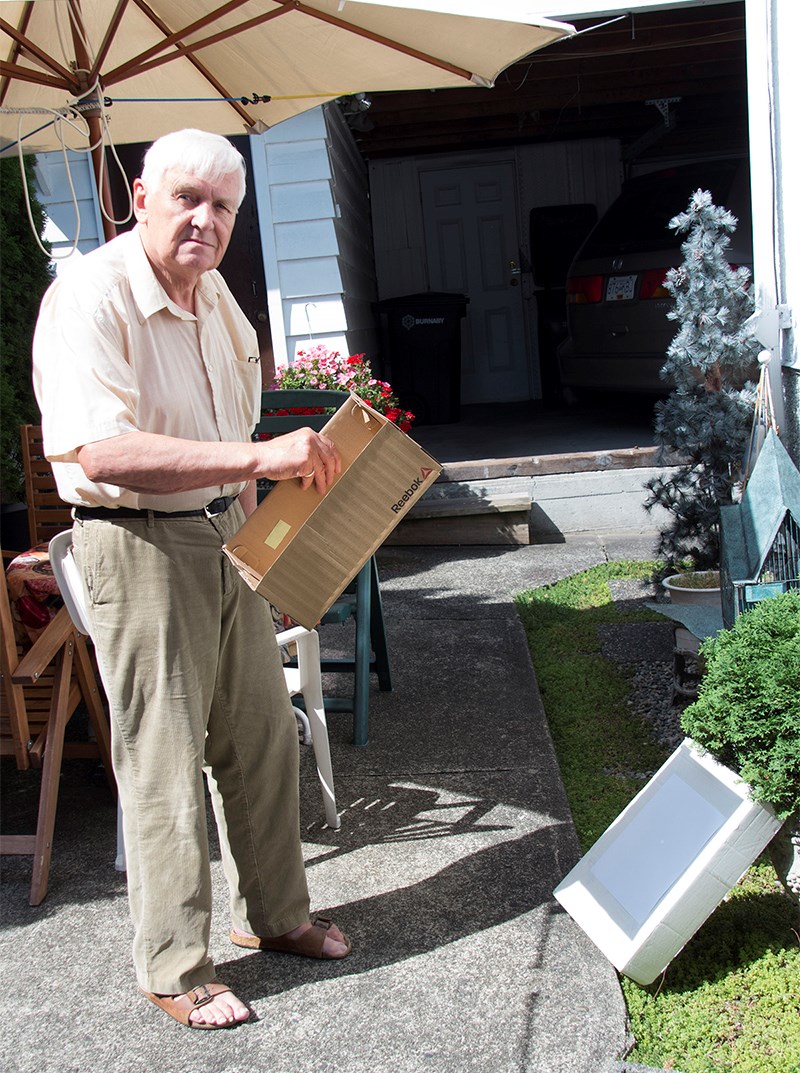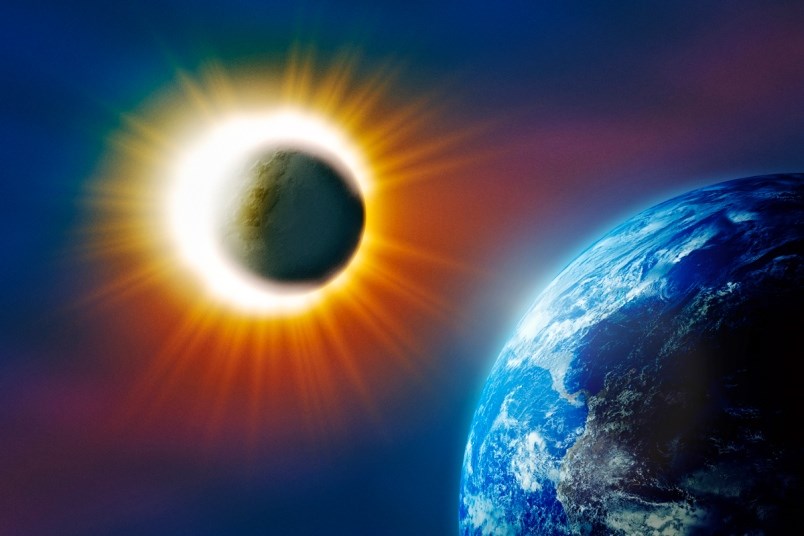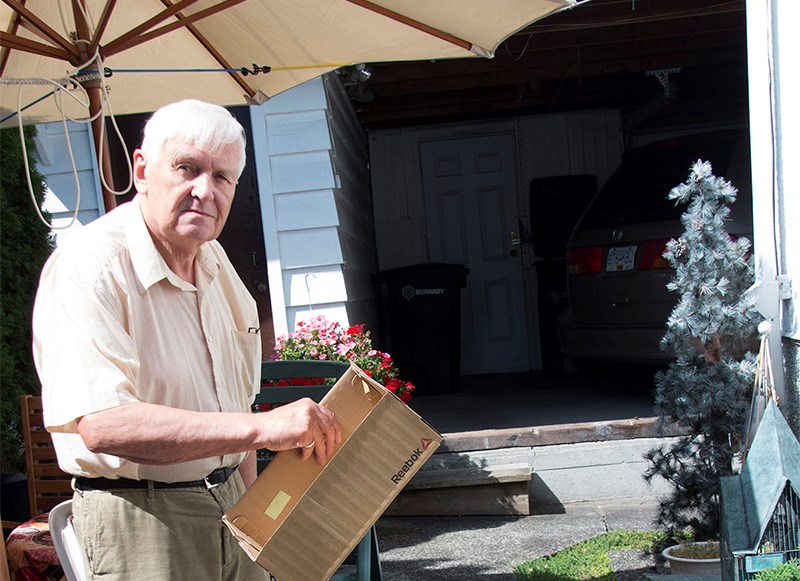Much of North America is expected to be captivated by the scene of a solar eclipse this Monday but a local expert warns against looking directly at the sun.
Karl Miller, past president of the Vancouver Centre, Royal Astronomical Society of Canada, suggests people make pinhole cameras from paper or boxes or come down to Science World when the eclipse happens between 9 a.m. and noon Monday where there will be special equipment for viewing.
“You could be doing damage to your eye,” Miller said, “and if you look through a telescope it (the damage) is almost instantaneous.”
Miller will be at Science World Monday morning with other members of the society, giving interested visitors a peek at the eclipse through safety glasses or telescopes.
Sunglasses won’t give any protection either.

A quick Google search offers directions for pinhole cameras, but Miller said the easiest is to prick a small hole in a large piece of cardboard then place a second piece of white card or paper on the ground and hold the first above it.
Stand with the sun behind you to see a projected image on the ground sheet. You may have to move around to see the best reflection.
Don’t be disappointed it you don’t see a total eclipse, that’s because we’re too far from the epicenter. The most we will see is an 86% totality when the sun is covered by the moon.
It’s been almost 40 years since Miller saw a total eclipse, an exciting moment in 1979 when he visited Winnipeg for the experience.
Calling it a “complex dance between the earth, the moon and the sun,” Miller said “it’s an experience you don’t want to miss.”
He described the experience as eery, when the sky darkens, the birds stop singing and the surrounding area appears to be caught between dusk and dawn. The total eclipse lasts only a few minutes, but Miller recalled how the hair stood up on the back of his neck, even though he knew what to expect.
“It’s no wonder that the original people in the early days before we had these communication capabilities would think the sun was being swallowed by some dragon.”
Only a narrow swath of North America, including an approximately 110 km-wide band in Oregon, the site of many viewing locations, will see the total eclipse.

Although solar eclipses are common, this is the first time in nearly 40 years that North America has had a front row seat to such an event. The next eclipse is expected on April 8, 2024.
To get a preview of how Monday’s eclipse will look in Coquitlam, visit https://www.timeanddate.com/eclipse/in/canada/coquitlam
What you’ll see
9:10 a.m., partial eclipse begins
10:21 a.m. maximum eclipse
11:30 a.m. partial eclipse ends
— source www.timeanddate.com



